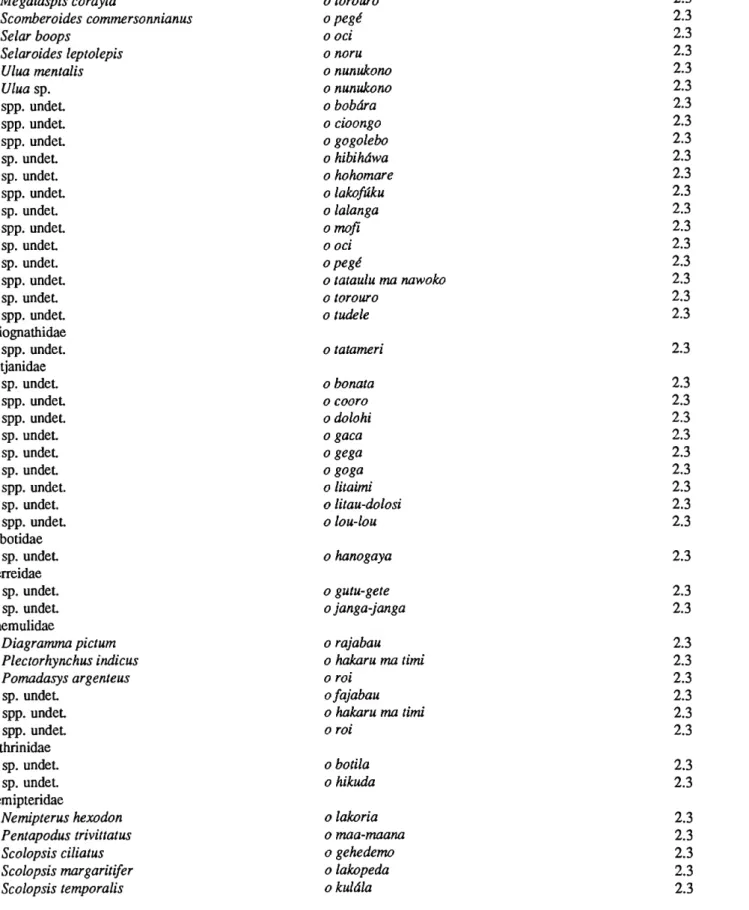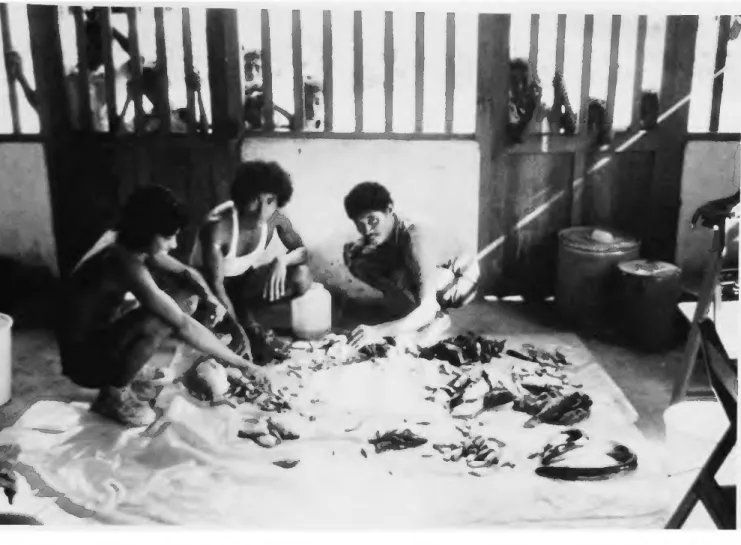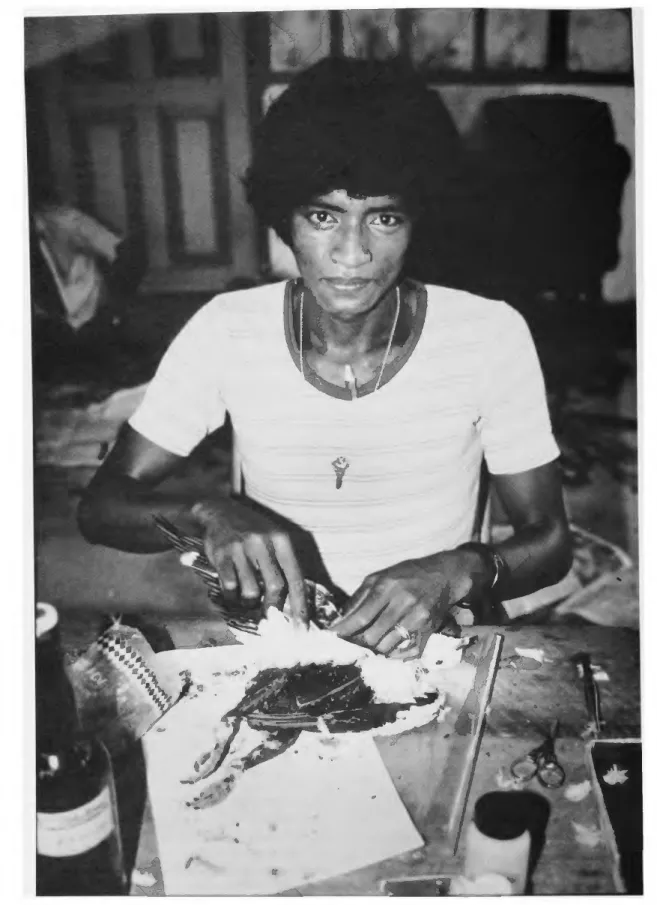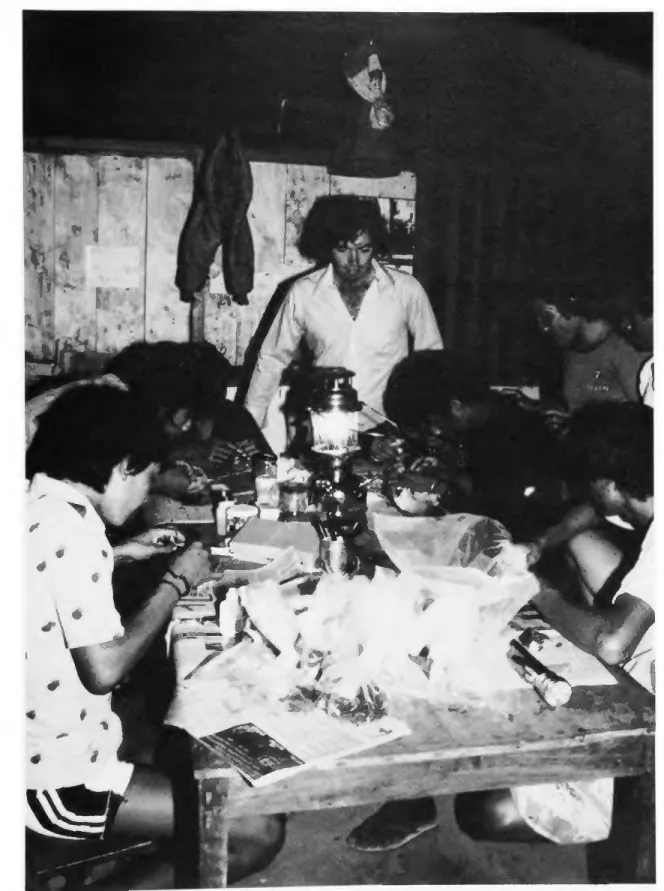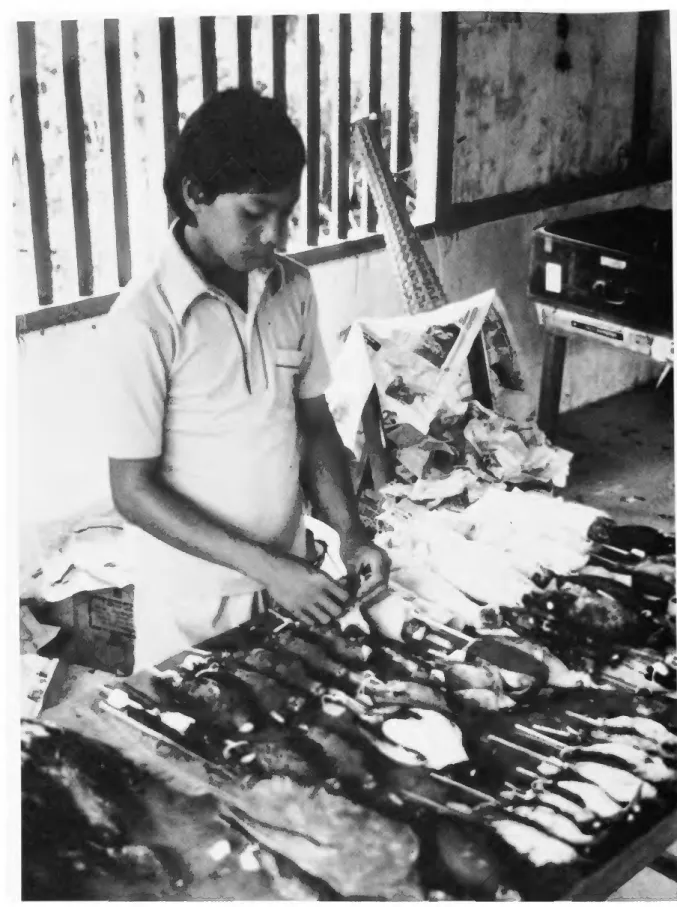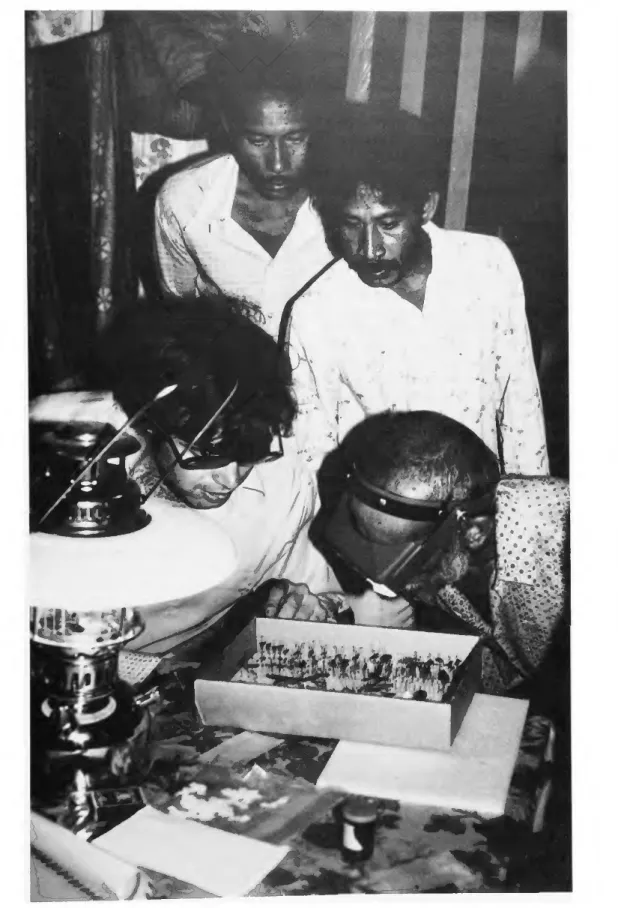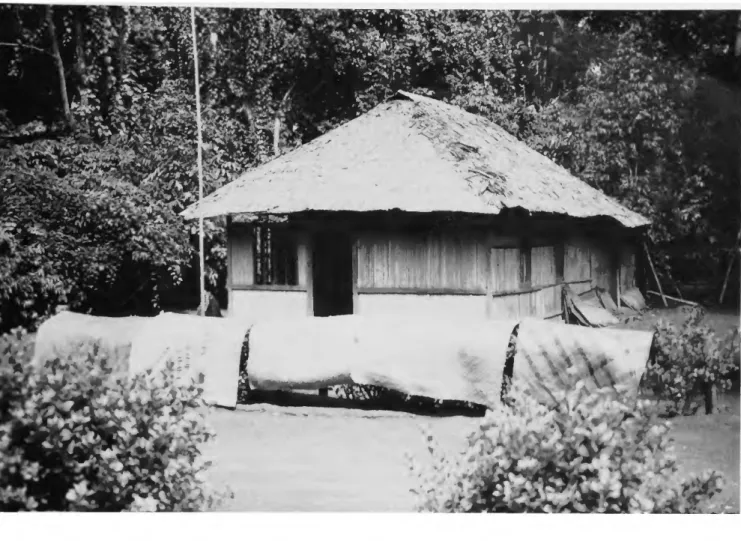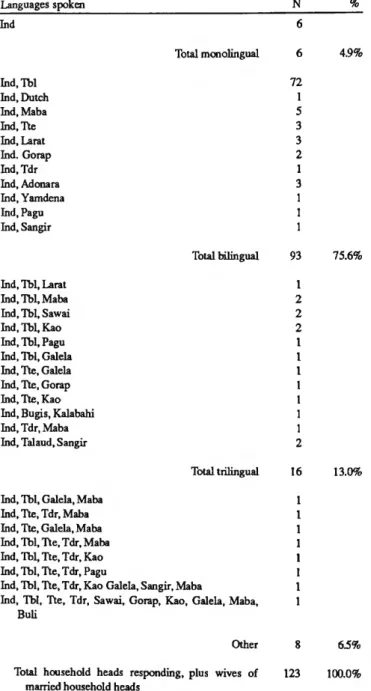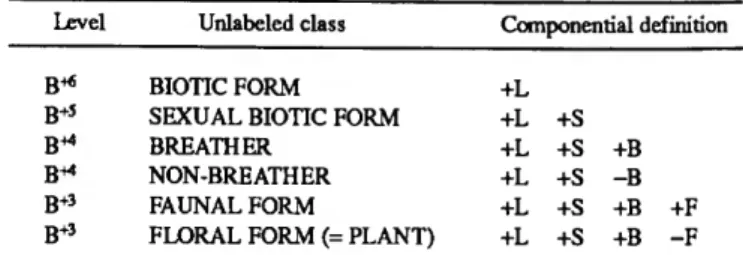The emphasis on publication as a means of "disseminating knowledge" was expressed by the first secretary of the Smithsonian. Radjiloen of the Cultural Section of the Ministry of Education and Culture of Ternate, J.
Introduction
The Description of Tobelo Folk Classification
This folk biology research was undertaken in the context of a wider ethnography of the Tobelo culture, as well as a study of that language and the local dialect of Malay. My field methods were simple, if sometimes inappropriate. Much of the time involved in the study of folk biology is spent creating relevant collections of local fauna and flora.
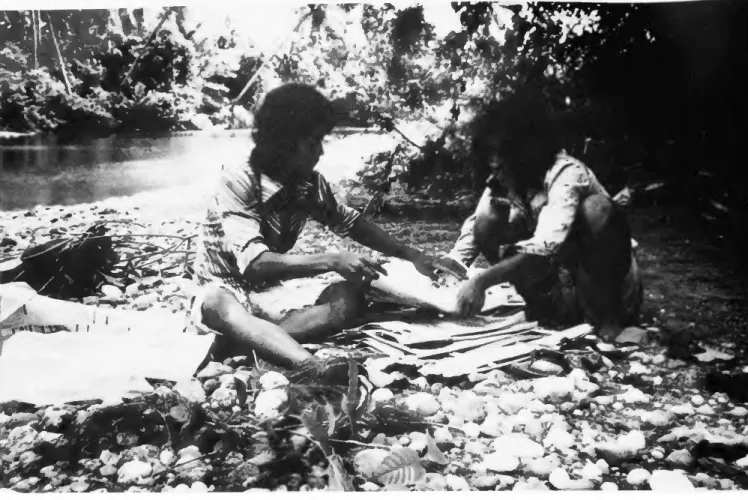
The Tobelo Language Situation
MMMHQ
Tabaru
TuguxiL [Tob«u]
Ternate
- Multilingualism and the Use of Other Languages in Special Registers
- The Cultural Importance of Local Biota
- Tobelo Cultural Presumptions about Their Folk Biological Classification
The northern border of the Boeng (B) dialect, on the northern peninsula of Halmahera, can roughly be drawn on the current border between the Kao and Tobelo districts (see Map 1). Because of the many factors that make the in-law taboo less draconian than it seems, this option is many.
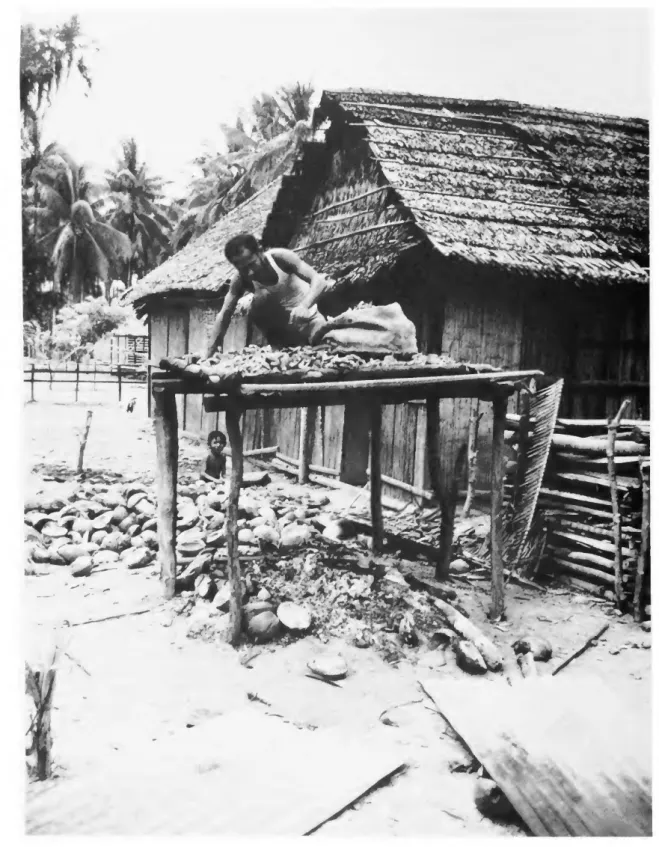
Plant and Animal Nomenclature
- Types of Lexemes
- A Note on Berlin, Breedlove, and Raven's Classifica- tion of Lexemes
Bj (phrase-hke con- o hiba ma gogo (X '[green parrot] . struction) Geoffroyus geoffroyi' [poss.] 'feathers') 'feathers of the parrot G. This is not a criticism of the lexemic typology, but rather of the terms used for types of lexeme.
The Domain of the BIOTIC FORM, and Other Posited Unlabeled Classes 1
- The Method of Co-hyponomy
Similarly, I have listed biotic classes apparently implicated in the definitions of the rich Tobelo lexicon dealing with animal and plant forms. It is important to emphasize that we should only place hidden classes of objects in the definitions of terms if alternative definitions cannot be sufficient to define the term in question.
BAMBOO
It seems to be considered an organ of crucial importance for the survival of plants and animals. No “part” of a loose branch, bamboo or wooden vessel, or of any non-FLOWERAL FORM such as mushroom or seaweed, or other object may be said to be ma utu-oka, except parts of FLOWERAL FORMS.
GRAIN
PANDAN
The Tobelo Folk Classification of BIOTIC FORMS
- Introduction
- The Classificatory Framework
Such constraints must explain the fact that some simple word lexemes below the base term level appear to be related to the base term (o X o Y). He has also discussed some characteristic uses of basic terms in natural contexts, especially the "ranking" of terms for BIOTIC FORMS, where the term B° serves a distinguishing function. As the discussion above (Chapter 4) noted, unlabeled classes are considered here to be necessary in the description of die BIOTIC FORM domain and the Tobelo language.
The sub-classification of the basic plant class or roringohana can be diagrammed as below (this has been carefully checked at Pasir Putih village; there may be variations elsewhere).
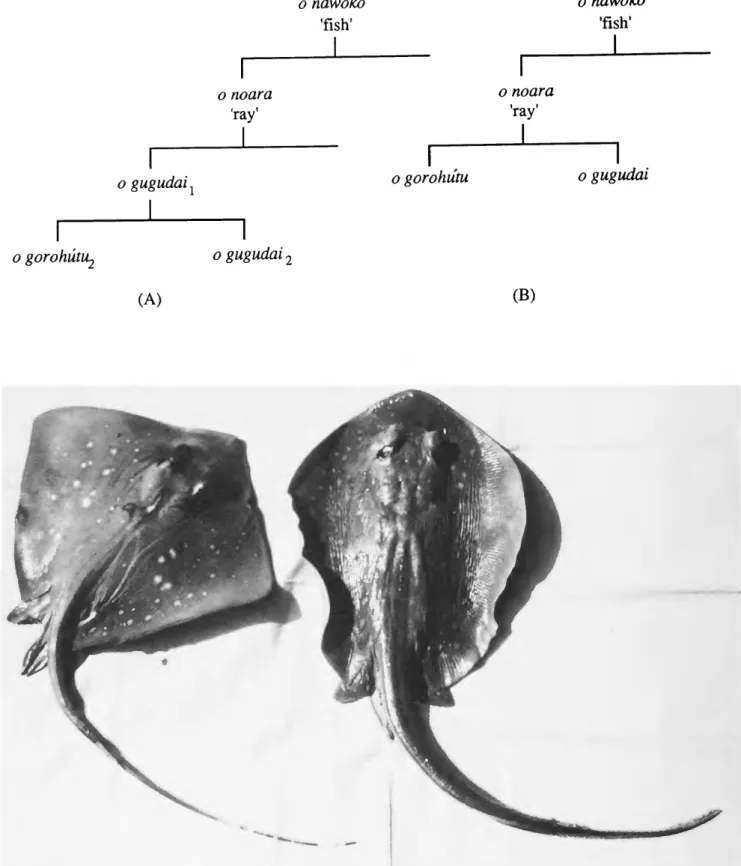
Those who accept the former justifications for positing such hidden classes wdl concede that they add more justification for considering the basic framework of Tobelo's eleven-level classificatory hierarchy as a taxonomic one, albeit one in which other non-taxonomic principles operate. As coastal dwellers, the Tobelo are familiar with the marine and terrestrial fauna and flora of a vast area of great biological species diversity and they inhabit distinct new organisms. For example, of the entire large group of biological species, genera, families and even phyla in the popular class o lulumite 'moss, mold, bryozoa, small algae', only one is singled out a light green moss (unspecified species ) that hangs from trees and is called aunu ma dodogumu 'blood stopper'. It is apparently distinguished by its medicinal importance (imposed by the name of the mushroom) in stopping the flow of blood from cuts (cf. die 'herbaceous herbs' of tiiis name class).
The Venn diagram (bottom left) presents one way of interpreting the relationships between these three classes, expressing the assumption that it is just one of the 'spider' classes, with two subclasses that do not sufficiently subdivide it; the remaining 'spiders' are simply referred to by the higher-level term.
Indeed, it expressed its own particular "esoteric" or idiosyncratic solution to the problem of the "masculine" and "feminine" forms of these basic classes. For many of the classes I have named, they have merely acknowledged that the plant is not usually divided into "male" and "female" forms. Sometimes even tiie morphological similarity of cross-cutting subclasses is implied in the base term itself (e.g. o tutulaka in Appendix 1.1).
Except for 'ants', Tobelo does not distinguish between 'motier' forms of subclasses.
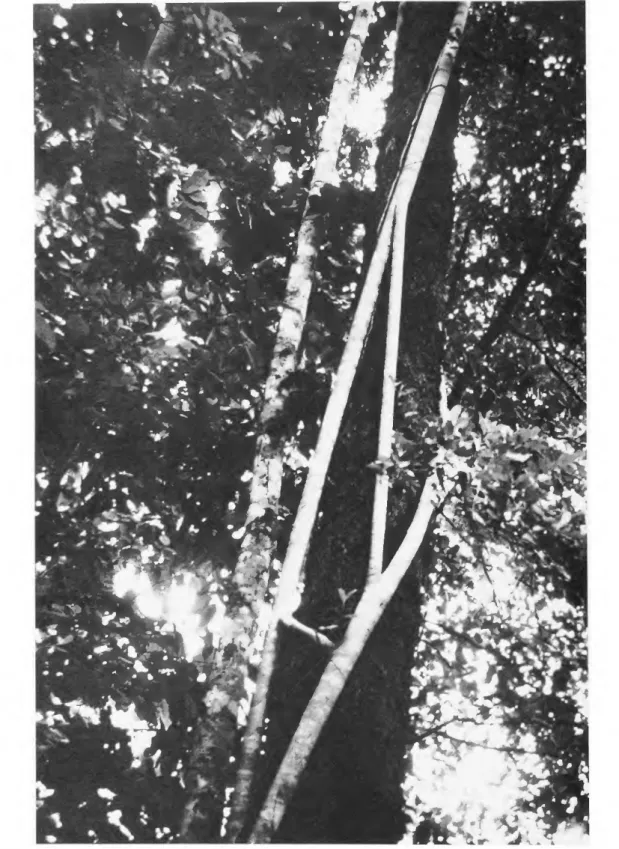
Note: The sub-classification shown is that of Loleba village (not checked elsewhere). subclass of o bole 'banana' which also has this name)].
Hueting, 1908c:21 translates this term zwoluw 'swallow.' This bird is occasionally referred to by Tbl using the NMM term burung gareja 'church bird' because of its habit of nesting under the eaves of tall buildings, of which churches are the most familiar local examples.] Disc.: This term was applied to Collocalia vanikorensis and C. The unpalatable name also corresponds to the offensive smell of this bird, locally considered inedible even by dogs.] Disc: The name was appUed to botii E. The term may thus be glossed 'large, black (or dark) and white seabird.' The name apparently characterizes (or caricatures) both birds' way of swimming along the surface.
Note: On Obi Island (various Tbl dialect) some specimens of this species were called o hambtiru ma doru [P-EN, 'bad die/bad hamburu']. The word hamburu is unknown to the dialect informants D.) Hemiprocne mystacea.
However, the only hawk-owl occurring on Halmahera is Ninox squamipila, the only Halmaheran owl I have never obtained. squamipila is like the other two hawk-owls of the wuku class, or more ltieely it is denotata of the one Tbl class of owls of which I have obtained no specimens:. NMM lado, same meaning] 'sea eel' (many collected, all sp. except of die family Muraenidae, except as noted below, and two Neopo- macentrus sp. of family Pomacentridae). 4- 'leaf; 'leaf of the baru tree' (so caused because the shape of this fish resembles that tree's leaf)] Scatophagy or gus (Scatophagidae).
Acentro-gobius cf. betel-pepper)' 4- redup.; 'rather like a betel pepper' (so called because of the elongated shape of this fish like that of the fruit of betel peppers)] (or) o bobidoho [CX,< bidoho (as above) 4- agent redup. ; here it is used as an alternative form of reduplication, apparently on the analogy of the more common bido-bidoho].
Note: This class of fish is called (icon) kobds 'kobds (fish)* in NMM, which distinguishes kobds lug 'freshwater kobds' from kobds laut 'sea kobds'. Apparently as a translation of this NMM classification in Tobelo, I once recorded the Tbl term o beene o akeriha 'freshwater bone' at Loleba in 1978. However, other Tbl speakers at the village said they considered the expression unacceptable, noting that the NMM kobds air should be called o dungiri (q.v.) in Tbl. and not subsumed under the o bones class at aU. o murumu 'star, starfish']. Note: In addition to the subclasses below, the fish called o lakofuku (q.v.) is considered by some B dialect informants to be a subclass of o bobdra, and indeed bobdra is called weU in NMM.
Note: In the B dialect (Loleba), but not in the D dialect, this subclass is called o gordra ma beka 'female gordra', in contrast to the o cooro[lgordra]. Note: Tt Loleba (B dialect), I have included the following form for this class, although it is considered unacceptable by D dialect speakers: o deo-kdmo [CD-EN, 'die komo (form of) deo'] 'juvenile form of that deodorant fish'. Cynoglossidae and Soleidae whose eyes develop on the right side of the body (the left side is held down the surface as the fish swims)'.
By referring to this subclass as 'male', Tbl make a nomenclatural distinction, not a judgment of the fish's sex; as an informant from Pasir Putih told me, "We only call it male, but sometimes the male has eggs in it") sp. term used in dialect B, unknown to my dialect informants D) sp.
*-cina in Tbl, and die CD cannot be exocentric)] spp. o bia-haki [CD-EX, trunc. Note: It is possible to form many terms of doubtful lexical status based on this term, including: o tiba ma guru 'bamboo (Schizostachyum spp.) borer' etc.
Tobelo apparently considers head lice to be a "normal" human ectoparasite, but when ticks occur in humans, they are usually referred to as o ode ma gani 'pig ticks', believing that they came from a pig. Note: This Tobelo word, in addition to this original meaning, increasingly corresponds to the full range of meanings of the Indonesian word kuman, which includes 'germs (of disease),' as Tobelo teaches the "germ theory of disease". of cosmopolitan medical practitioners Idea local doctors and nurses. So people now say that they don't stay too close to people with severe Ulnesses because the gummene fear the 'germs' of the iUness.
M o habeta ma ayo [P-EN] 'habeta's mother' mature weeds (the mature form of the larvae called o habeta)' Note: These mature forms may not be called o habeta, but the 'motiier' class may is not considered a "growtii stage" subclass, because it is not a subclass of some higher-level *habeta class.
4- 'layer of tiles that sUces (< -tetoro 'to cut with short sUcing strokes')'; '(animal) that chops bamboo while holding sago (eg, gnawing)'] (or) o gugtinu ma roreno (D dialect term) [CD-EN, Tengtii made of bamboo (used for roasting and storing sago) 4-pos. The few specimens of tiiis group brought to me, however, have all been large specimens of Rattus rattus collected from places near the primary forest. This may indicate that tiiat Tobelo are aware of some slight difference between R. . rattus found in vdlages and tiiose from primary forests Alternatively, the large specimens of R. rattus found in that context may be grouped in the locality with another large, yet undiscovered rat species from primary forest areas.).
Note on subclassification: in the B dialect of Loleba, o putati u (q.v.) 'coconut crab' and o wungama (q.v.) 'hermit crab' are considered B_1 subclasses of o u koru 'crab.' However, with this remark.
Again, the preference for the Malay term seems to be related to the fact that tiiese are readily available for sale to Malay-speaking traders.) sp. excluding L. infrafrenata) and Oreophryne moluccensis o tii-tiihi [CX, < -tiihi 'to blow' 4- redup.;.
The Tobelo Classification of the Other BIOTIC FORMS
In Problems in Lexicography: Report of the Conference on Lexicography held at Indiana University, November. Proceedings of the Fourth International Conference on Research on the Moluccas and Irian Jaya (Seminar Penelitian Maluku dan Irian Jaya). Synonymy in zoology should use the short form (taxon, author, year), with the full reference at the end of the paper below.
Extended notes should be collected and placed in a notes section at the end of the text. For book and article titles, sentence style capitalizes according to the rules of the language used (exception: capitalize all main words in English). Legends for illustrations should be submitted at the end of the manuscript, with as many legends typed, double-spaced, on a page as is convenient.
